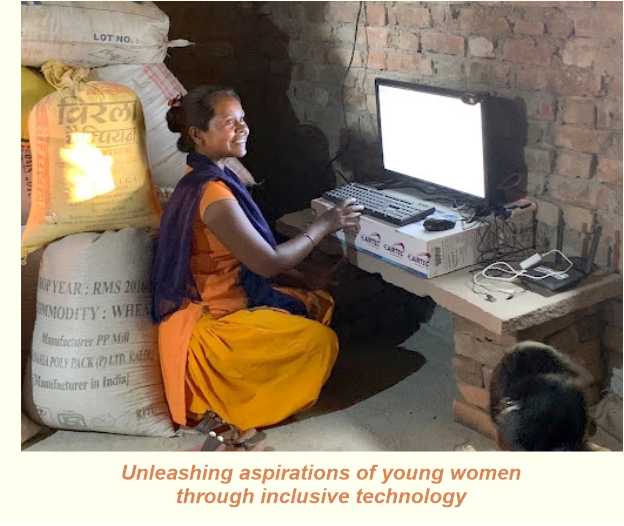Pathways for Inclusive Entrepreneurship: A Post-Pandemic Outlook
Among the many cries of ‘build back better’, one wonders who the face of this post-pandemic future in India is. As we design a post-pandemic economic recovery, are we considering the undeniable ‘duality’ of an economic system – disproportionately ignoring the needs of many while responding, almost exclusively, to the aspirations of a few?
Nearly 81 percent of India’s population is employed in the invisible informal sector that includes socially disadvantaged groups1 and women. Every year over 12 million young adults enter the workforce, with only about 5.5 million of them finding meaningful employment2. Growing even faster are the aspirations of women and youth – which are being ignored – reminding us of much innovation in job creation that caters to local aspirations for a decent livelihood. This is where the significance of micro, small and medium enterprises cannot be ignored. MSMEs account for almost 30 percent of the overall GDP and are responsible for creating four out of five new jobs3. Within MSMEs, it is the local and grassroots enterprise unleashing aspirations that offer tremendous potential and opportunity for job creation.
Let us break down the challenge itself and look at some hard numbers. To improve the livelihood conditions of just 10 percent of the 40 million people stuck in low-paying, undignified rural informal sector jobs annually, an additional 4 million women and men will need to be employed in high-value-adding, opportunity-based local businesses. If each enterprise employs an average of three persons, over 1.3 million new businesses would have to be set up every year across 675 rural districts, that is, roughly 2,000 per district.
As per the Economic Survey 2020, entrepreneurship at the district level has a significant impact on wealth creation at the grassroots level and yields a significant increase in the GDDP (Gross District Domestic Product)4. To this effect, Development Alternatives has seen, within its communities of work, that opportunity-driven entrepreneurship, steered by a systemic approach (as opposed to a linear, top-down one) can turn villages into constructive communities of economic growth, demand generation and consumption. This highlights the urgent need for systemic solutions that create change at multiple levels to bring about a paradigmatic shift in the entrepreneurship space.
Such systemic shifts, we believe, need to be engineered at three levels – the support structure itself, where we move away from enterprise development, i.e., one-to-one ‘capacity building’ support to the creation of an ‘entrepreneurship ecosystem’ that enables an entrepreneur to move away from being a mere recipient to a critical actor, among a network of peers. Combining this with shifts in the behaviour of the various stakeholders to move towards collaborative action with greater local decision-making will further enhance the effectiveness of the ecosystem. And finally, changes within the policy architecture will enable entrepreneurship to move away from the delivery of schemes towards nurturing innovation and knowledge transfer to address the dual objectives of social inclusion and enterprise profitability.
A framework of this nature, for building and developing a support system, is not only cognisant of local aspirations and opportunities but would also help build resilience within communities towards future disasters and external shocks. It would enable us to build a future for millions of young women scrounging for resources in the streets of their villages, rather than a small minority of IT professionals working their way up the corporate ladder from the comfort of their home. In the light of this forward-looking lens, we invite building upon perspectives that have been highlighted in the newsletter on ‘Future of Green and Inclusive Entrepreneurship’.■
Endnote:
1. https://www.ilo.org/wcmsp5/groups/public/—dgreports/—dcomm/documents/publication/wcms_626831.pdf
2. https://www.weforum.org/agenda/2017/10/india-workforce-skills-training/
3. https://www.pib.gov.in/PressReleasePage.aspx?PRID=1744032
4. https://www.indiabudget.gov.in/budget2020-21/economicsurvey/doc/vol1chapter/echap02_vol1.pdf
Kanika Verma
kverma@devalt.org
The views expressed in the article are those of the author’s and not necessarily those of Development Alternatives.
This blog first appeared as an editorial in Development Alternatives Newsletter November, 2021






Leave a Reply